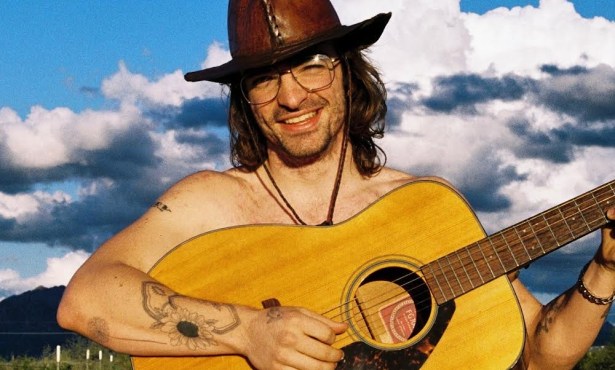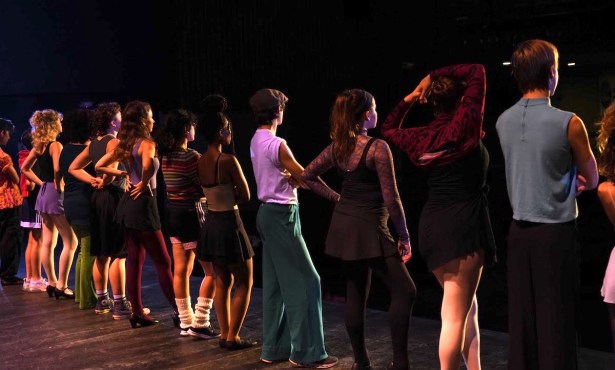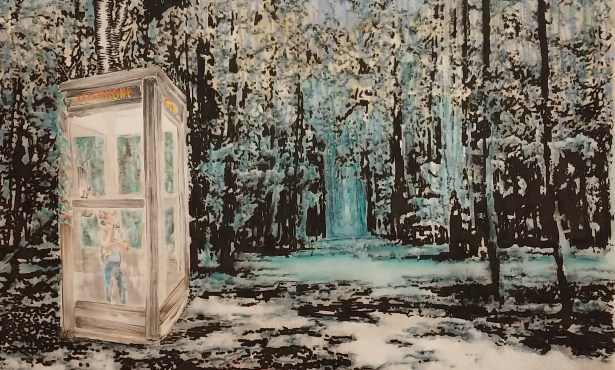An Enviable Position
Larry Feinberg Named New Director of SBMA
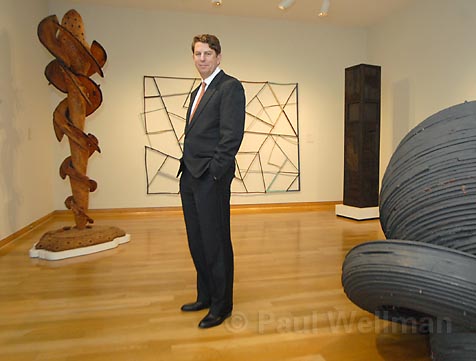
Help wanted-chief executive of major cultural institution in Santa Barbara, with duties including but not limited to programming, exhibition planning and design, hiring of senior staff, long-term goal setting, fundraising, acquisitions, and community relations. The successful candidate will have worked at more than one major art museum in a senior curatorial role, have a Ph.D. in Art History with significant publications. Preference will be given to those candidates who also hold an M.B.A., and have demonstrated international business leadership experience. Benefits include the power to shape the cultural agenda of America’s most aesthetically well-rounded city, a visible presence among that city’s elite, and, yes, appropriate housing.
Sorry if this sounds like you, because the position described above – Director of the Santa Barbara Museum of Art – has been filled, and by someone who not only meets but actually exceeds these rarefied standards. Larry Feinberg comes to us most recently from Chicago, where he was curator of European painting and sculpture at the Art Institute, and also from the Frick, the Allen Memorial Art Museum at Oberlin College, and the National Gallery – all places he has curated – and from Northwestern and Harvard, where he accumulated those four degrees. Yet despite his rather imposing resume and decidedly traditional academic area of specialization – the Italian Renaissance – Feinberg is very down to earth, and really does insist that you call him “Larry.” I spoke with the new Director recently about his hopes and plans for the SBMA.
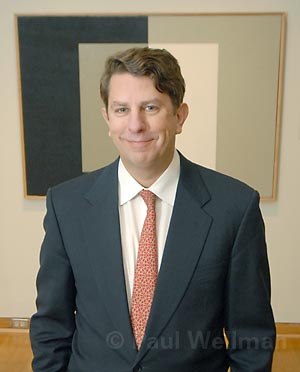
Welcome, and congratulations on having been appointed. I understand there are some hires you will be making soon. Can you tell me a little about that? Yes, thanks, there are some things that Phillip [Johnston, the outgoing director] sort of left on hold, some decisions about staff that are waiting to be made. I feel that I am in a very enviable position that way because not only did Philip and the trustees and the staff solidify the position of the museum financially and in terms of programs, they also left two key curatorial positions open. They have left it to me to bring great people in for those slots, people who I really believe in and want to work with. There’s one opening for a curator of contemporary art, and then there’s also the need for a European art person to do 19th century painting and then other things going all the way back. I can pitch in there for a time, but eventually we will find someone to take it on. What we all want out of this is to raise the bar here. Although the museum already has an exemplary record of producing wonderful exhibitions, there is a level of international recognition that we are just beginning to attain, and that, among other things, is what I was hire to pursue.
When you were first presented with this opportunity, what did you see in Santa Barbara that made you want to come here? I was looking first at the museum itself, and it is a jewel. The permanent collections are very strong in many areas-in classical, in Asian, in 19th century American. There’s really wonderful material already here.
Another thing that appealed was the fact that this museum was ahead of the curve on educational outreach. I was here about 14 years ago, visiting someone at the UCSB University Art Museum, and the Ridley-Tree Center had already been started. What I have been doing with the Art Resources in Teaching program in Chicago involves professional artists getting paid to go into the public schools to teach art and a little bit of art history. These are creative programs that tie in with science and culture, and it’s the kind of thing I want to continue working on here.
You curated a very successful show of work by the French Symbolist Gustave Moreau. How would Moreau translate with say, high school students? Even for adults the Moreau show had a lot of mythological themes and subjects that today often need to be explained, so that aspect of the presentation was certainly educational. Moreau was very interested in Indian mythology, and that’s something people also took an interest in. Probably the most relevant to your question would be that he was enormously interesting to a certain part of our audience because he includes figures in his paintings with elaborate tattoos, and that brought in many younger people who came to see it because they were into body art.
He was a wonderful colorist, and a teacher of Matisse. This opened him up to people as a pure painter.
Is the museum going to lead the art community here? I do think it’s an important part of our mission to promote the art that’s being made here. Otherwise you’re just a consumer culture, and not a culture of producers, and that’s clearly not the case in Santa Barbara. I know what it is like for an artist to be outside of the New York or Los Angeles art centers, and to feel as though they are not fully respected or appreciated within their own community. We called this the “second city complex” in Chicago, where you would have Chicago artists who were not being bought by the museums there, and then they became popular in New York, so that by the time they were legitimized, the work cost ten times what it would have in the beginning. Henry Darger grew up with his father in the shadow of the Art Institute, and, while it was still affordable, most of his work was acquired by the Museum of American Folk Art in New York. He may be considered an “outsider,” but I happen to think he is also one of the greatest colorists of the 20th century. This is why we have to find a strong person for the contemporary art curatorship [at SBMA], because that person will have to be able to make the studio visits, here and elsewhere, and keep up with what’s happening internationally, and travel to the fairs, and really have their finger on the pulse. I like to think of the discovery of an Italian artist from a small town called Vinci – first name Leonardo.
How do you plan to draw audiences for your exhibitions? I hope to use loans and reciprocal arrangements to bring things in from other museums and other countries. This is an area where the new curators will have to be well-connected, because I expect them to be able to bring in these major loans and make these collaborative shows happen. It requires that you can work with foreign governments.
They will also have to be very personable. We have gotten to a point where a B+ Cezanne costs $30 million, and museum acquisitions budgets just can’t compete in that atmosphere. So we will have to have curators who are willing to travel with people, and go to the studios of New York and Long Island City and bring back the really interesting things, and, we hope, potentially leave some of it to the museum.
Is the quality of talent you need willing to relocate to Santa Barbara? Yes, I have no doubt that I can get the world’s best people to come here. I am starting by asking people what their dream show would be, and then I am working back to what is financially feasible. Honestly, it is easier to raise money for something that is going to be really spectacular, and really memorable. When I did the Michelangelo and the Medicis show, it started out as a show just about the Medici, but at a certain point I said, wouldn’t this be a better draw – and a better show – with Michelangelo in the title. And the Italians we were working with agreed, so then I said, well, we are going to need some Michelangelos then, because we can’t do what we call in this country a “bait and switch,” and so we ended up bringing two really important Michelangelo sculptures to Chicago. This was only the second time a major Michelangelo work had come to this country, the first time being the Vatican Pieta, which was brought here for the 1964 World’s Fair. Doing that made a whole new story line, and people who had never heard of the Medici got excited about the show at that point, and Bank One came on as a sponsor because of it.
Any hints about what we can expect? Santa Barbara can expect shows with names like Da Vinci, Van Gogh, and Jackson Pollock to come soon, in these types of smaller, loan-intensive exhibitions. Because of what the art market is like right now, with the high costs for works and insurance, we are actually in a position to compete with the biggest museums because even they can’t afford to do the blockbusters they used to do. We can do the smaller and the medium sized shows here, and that is what the Art Institute is doing now, and even the Metropolitan in New York. The idea is that the shows make the most out of 50 Leonardos because, if you have a good thesis, and the work is interesting and hasn’t been seen too much, and you back the whole thing with good scholarship, then you can get all you need out of that size show. You don’t have to have 200 works in an exhibition to make a point.
4•1•1
Larry Feinberg begins his position as Director of SBMA on March 1st, 2008.

